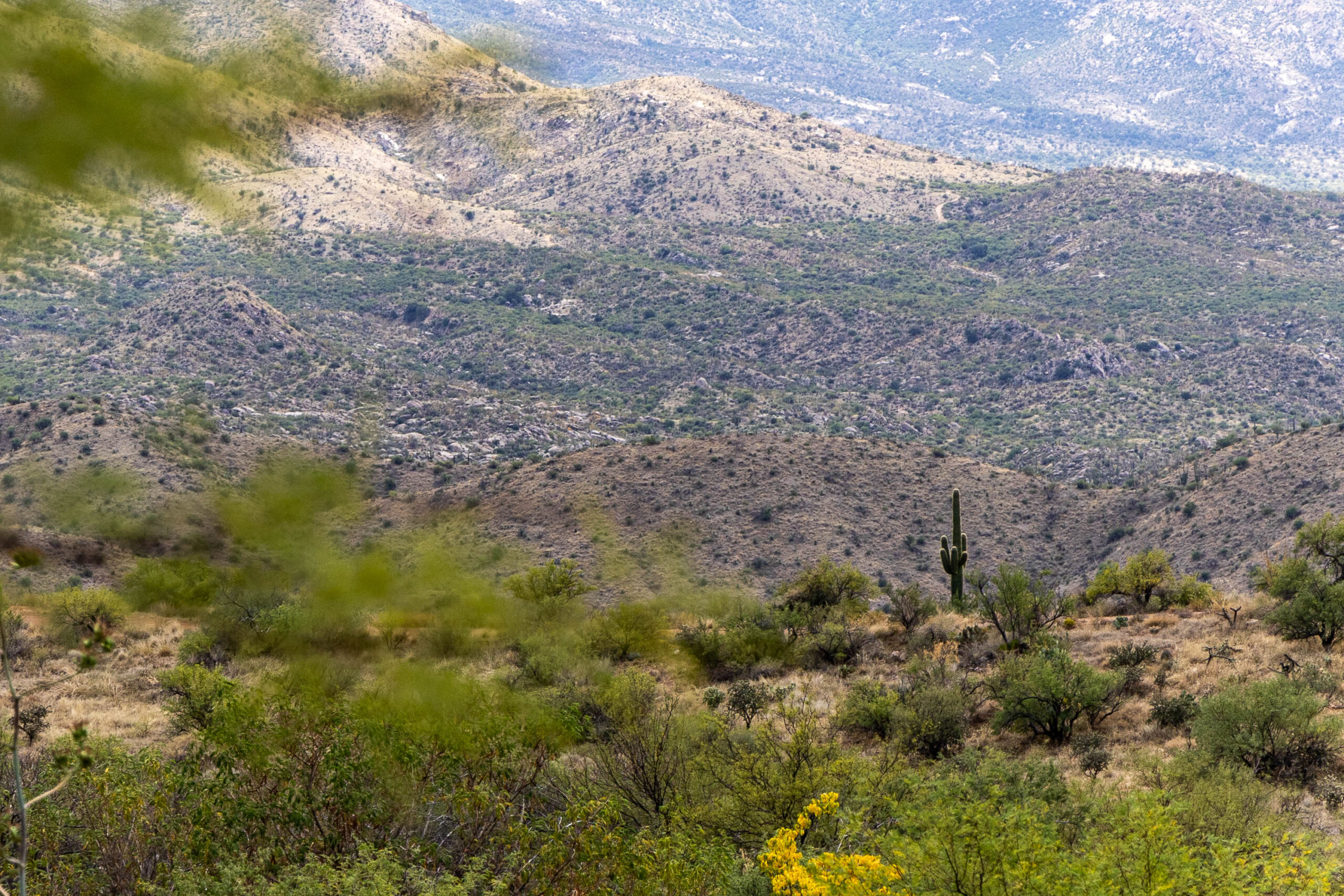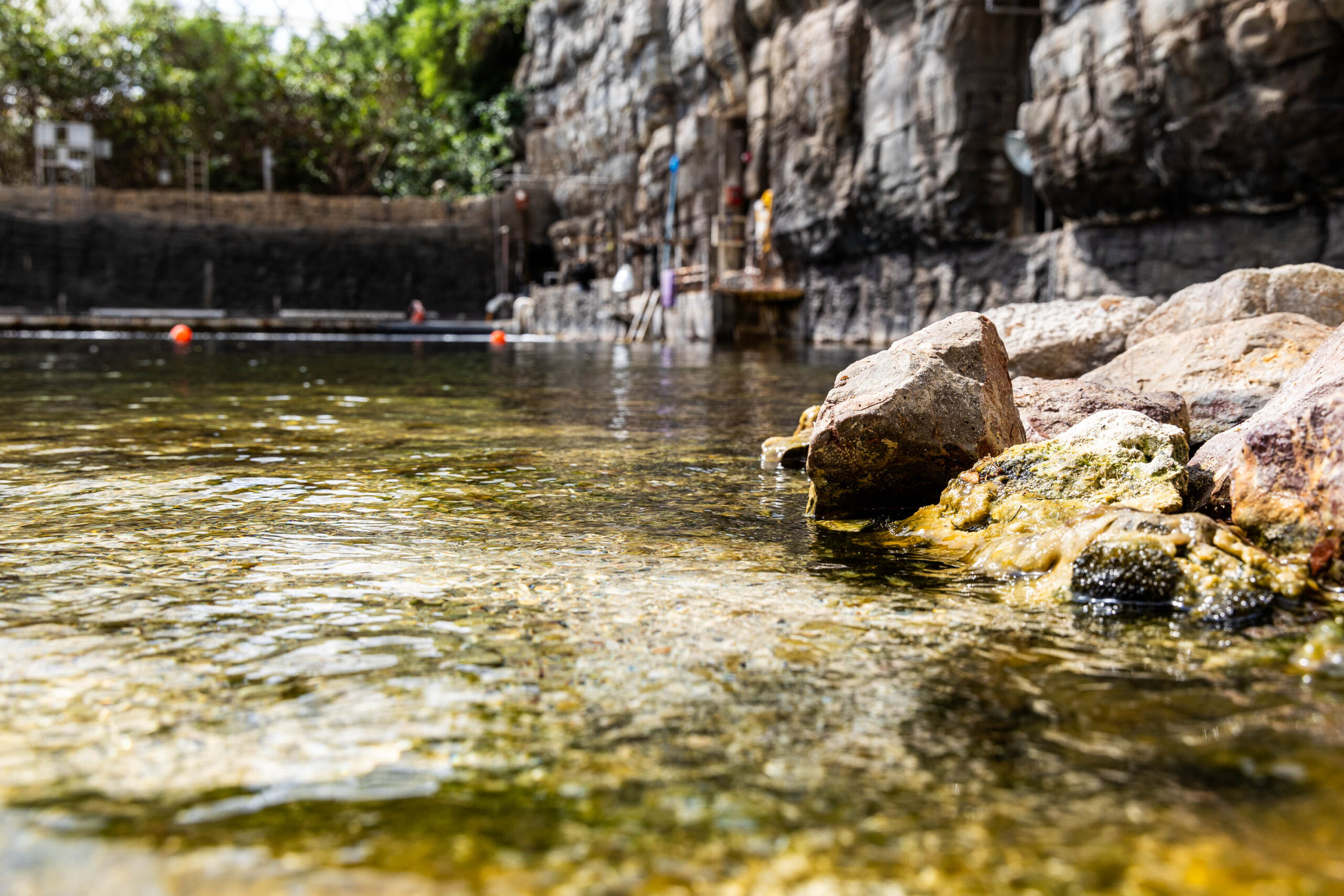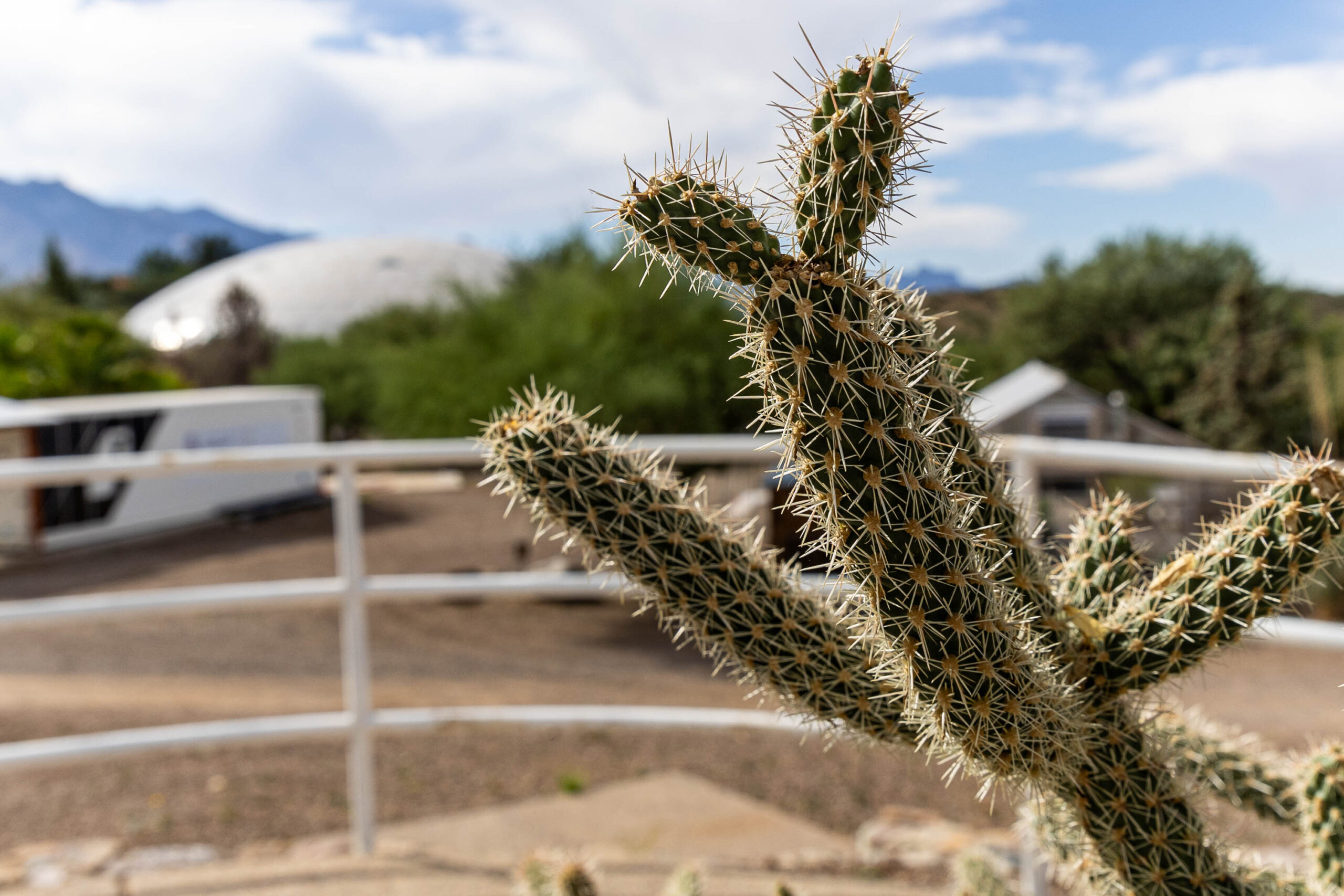
Emma Montgomery

Emma Montgomery
In Oracle, Arizona, a serene scene of desert mountains hosts flourishing mesquite and towering saguaro cacti. The desert is solitary and parched as temperatures of 100 degrees Fahrenheit scorch the land.
Yet the land is unsuspecting. A landscape of such solitude offers little confidence in any type of water, but life flourishes here as all species adapt to a lifestyle of less consumption, including humans.
The question, however, remains: “for how long?”
Scientists are walking a narrow walkway to establish the importance of water conservation to the community for the longevity of livelihood in the desert. It’s a balancing act of scientific communication.
Just south of Oracle in Tucson, an oasis houses programs devoted to conserving a precious resource. As the sun beats down on the University of Arizona campus, a slot canyon-shaped building on the edge of 6th Street provides relief for clusters of students, practitioners, and wildlife. In Tucson, water conceals itself in the large succulent trunks of cacti and the tiny leaves of desert-adapted trees. Water that sustains human life hides either in discreet rain barrels or deep underground. The artificial canyon defies typical Tucson ecology. Its lush central garden whispers moisture into the air, and the rain catchments that cascade from the fifth floor sprinkle drops of rainbows to the floor below.

Within this slot canyon named ENR2, is Sharon Megdal, Ph.D., the director of the University of Arizona Water Resources Research Center, a cooperative extension center. While her career now bridges communication efforts between those who consume water and those who do research on how to provide water to the scorching west, Megdal did not begin her career in water, or even natural resources. Because of her background in public policy work, she became involved in this fulfilling career.

“I got an appointment to a high-level state regulatory utility regulatory body, by the governor of Arizona at the time, and that literally changed my professional life,” Medgal said.
At the WRRC, Megdal applies the center’s mission statement to her career of engagement and education, vowing for “greater depth, broader perspective for a clear water future.”
“We at the Water Resource Center help convey and connect the folks who are working on the solutions with the folds who may benefit from the solutions or implement the solution. We’re mainly doing applied research, we facilitate work with the community,” Megdal said.

The National Institutes for Water Resources (NIWR) plays a major role in addressing the unique water-related concerns of the individual states and the nation as a whole by providing a national platform for collaboration. The NIWR network represents the only authorized federal-state program focused on applied water resources research, education, training, and outreach.
“So we’re mainly doing applied research, we facilitate work with the community which is important to us, but they’re also their water resources are very important to us,” Medgal said. “We ourselves are not the technical people, helping with connections, and bridging in both directions.”
Megdal notes that this is a particularly difficult topic to communicate about. Even more so in an arid area where water is rarely seen and does not stay long.
“We are sometimes a victim of our success… [people] take water for granted in most places.” says Megdal. “So unless you’re in some kind of crisis, people just aren’t that interested, or unless there’s some big increase in their water bill, they’re just not that interested. Yet, there are major investments that are going to be required or major policy acts.”
40 million people rely on the Colorado river as a water source, namely residents of seven states and 29 tribal nations. The Colorado River Basin States Representatives of the lower division states have agreed to conserve at least 3 million acre-feet of Colorado River Water in Arizona, California and Nevada by the end of 2026. In Arizona, System Conservation Implementation Agreement will commit water entities in Tucson and Phoenix to conserving water. Furthermore, $8.3 million will be invested over the next five years for water infrastructure, including water purification, reuse, storage, conveyance and safety.
The WRRC has hope that their unique team composition and exciting mission will change the face of water in Arizona, and even the Colorado Basin.
“We’re helping people, I’m helping with connections, and bridging in both directions. We’re gonna help people know what those efforts are and help those who think they have solutions, connect with opportunities, [and] get funding,” Megdal said.
